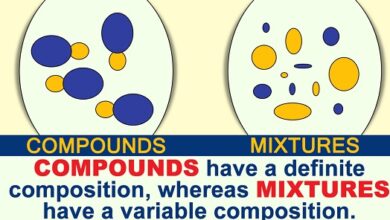What is Moodboard what it is for and how to do it
The world of creativity is much more complex than you might imagine. Many people consider that, one fine day, the light bulb in your head went on and you had the best idea of your life. However, the head of a creator does not work like that, and less in the artistic world. Our head works by connections and associations that, yes, are capable of inspiring us to create something genuine. However, it is always necessary to have a strategy or a formula to be able to activate all your senses and start a profitable creative process. In this article we will let you know about the Moodboard.
That is why, in recent times, a technique has been created that, within the visual world, be it decoration, design or illustration, is giving good results. This is what is commonly called a “wall of inspiration” and, in this new OneHOWTO article, we are going to give you all the basics about the Moodboard: what it is, what it is for and how it is done .
What is the Moodboard
The word Moodboard comes from English and, figuratively, means what in Spanish we know as “ wall of inspiration ”. This refers to creating a document or sketch that has everything that inspires you and that, for one reason or another, moves you to create or want to develop a design.
It is not strictly a collage that must look pretty, but it must have a meaning and an intention. The Moodboard is built through clippings, magazines, photographs, textures and colors and is created with an intention beyond the aesthetic . For example, if you are thinking of redecorating your house, of reforming your garden or if you want, on another level, to create a website from scratch, it is always good to put on the table all those things that represent you and be able to create something with it.
This tool is widely used by both interior designers, architects, graphic designers, illustrators or audiovisuals, since it is a very effective way of giving your brain the tools you like to create something with them.
What is the Moodboard for?
Moodboards are becoming more and more fashionable and there are many people who want to start applying them in their day to day. However, it should not be ignored that it is a specific resource , not an artistic exercise. This technique has a purpose and can be useful for certain aspects of a creative process, such as:
- To clarify ideas : sometimes we can believe that we have an idea, but we feel it entangled among many things in our head. The Moodboard helps us untangle all the tangle of ideas and clarify things.
- To ground our impressions : many times it can be the case that it seems that we have something in our head, but we do not give it shape. With this technique, you can begin to give shape, texture and color to that idea that wants to come out.
- To define our creativity : the world of art is abstract until we dare to give it shape. This creative tool helps us define and refine our next creation.
- To be able to say what our style is : we have many styles and fashions within our reach that can contribute more or less, but what is truly valuable is knowing what our own style is and what we feed on when creating it.
- In order to obtain results and improve and express our ideas : if you work within the creative world, the Moodboard is an ideal tool to be able to communicate with other people and optimize time and results.
How the moodboard is made
Deciding to make a good Moodboard is an excellent option if you are about to start a new project of style or design, or if you feel stuck in an idea that does not finish coming out. If you are wondering how to start and develop this technique, here we leave you the four main steps so that it begins to take shape:
- Define what the title of the project is: the first thing you should ask yourself is what you want to do and what is the objective. To do this, define a project name and manage a few keywords for the search.
- Start with the collection – With the title and goal set, start collecting and looking for all kinds of images that you like, inspire you and feel like they can work.
- Choose the support where you are going to create it : once you have the images, objects or digital media, you must choose what you want the support to be where you will build the wall. You can do everything digitally, editing, or opt for the analog way, making collages manually.
- Refine and define : once you have all the elements selected, you will have to filter and select those that most convince you. You can generate several versions so that you can later keep the best of all of them.




